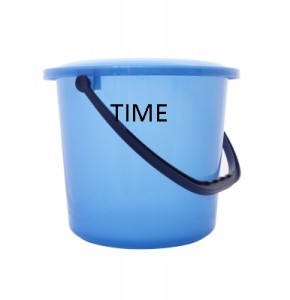Does your scheduling software know that?

“We may be going to hell in a bucket, babe, but at least we’re enjoying the ride.” –The Grateful Dead
In reality, using the “bucket” approach for scheduling is neither enjoyable nor effective. Chopping time up into segments–often called buckets–leads to scheduling and resource management that is inherently inefficient. We have all seen calendars that segment time into daily buckets, spreadsheets in which columns are one-hour buckets, or white boards with rows or columns that represent some preset time buckets. There is a better approach that treats time as a continuous variable for scheduling, resource management, capacity planning and project scheduling.
While convenience sometimes suggests that we select start times on the half hour or quarter hour, in manufacturing, medicine, food processing and many other environments, minutes count. Gaps created by unused time intervals are wasteful or sometimes even harmful.
Time is a continuous variable. When we chop time into discrete intervals or buckets, we are creating an artificial characterization of the environment. Sometimes we do this because it’s required by the tool we use to schedule. Data tables like spreadsheets or matrices have rows and columns. Putting time into these data structures requires the bucket approach. The native data structure for time is the continuous time series. Intervals of time should be able to start and end at any time, not just a bucket boundary.
If you are using a bucket system–manual or automated–ask yourself if you are losing generality, accuracy, or resource efficiency by doing so. Treat time as a continuum and you may just enjoy the scheduling ride.
